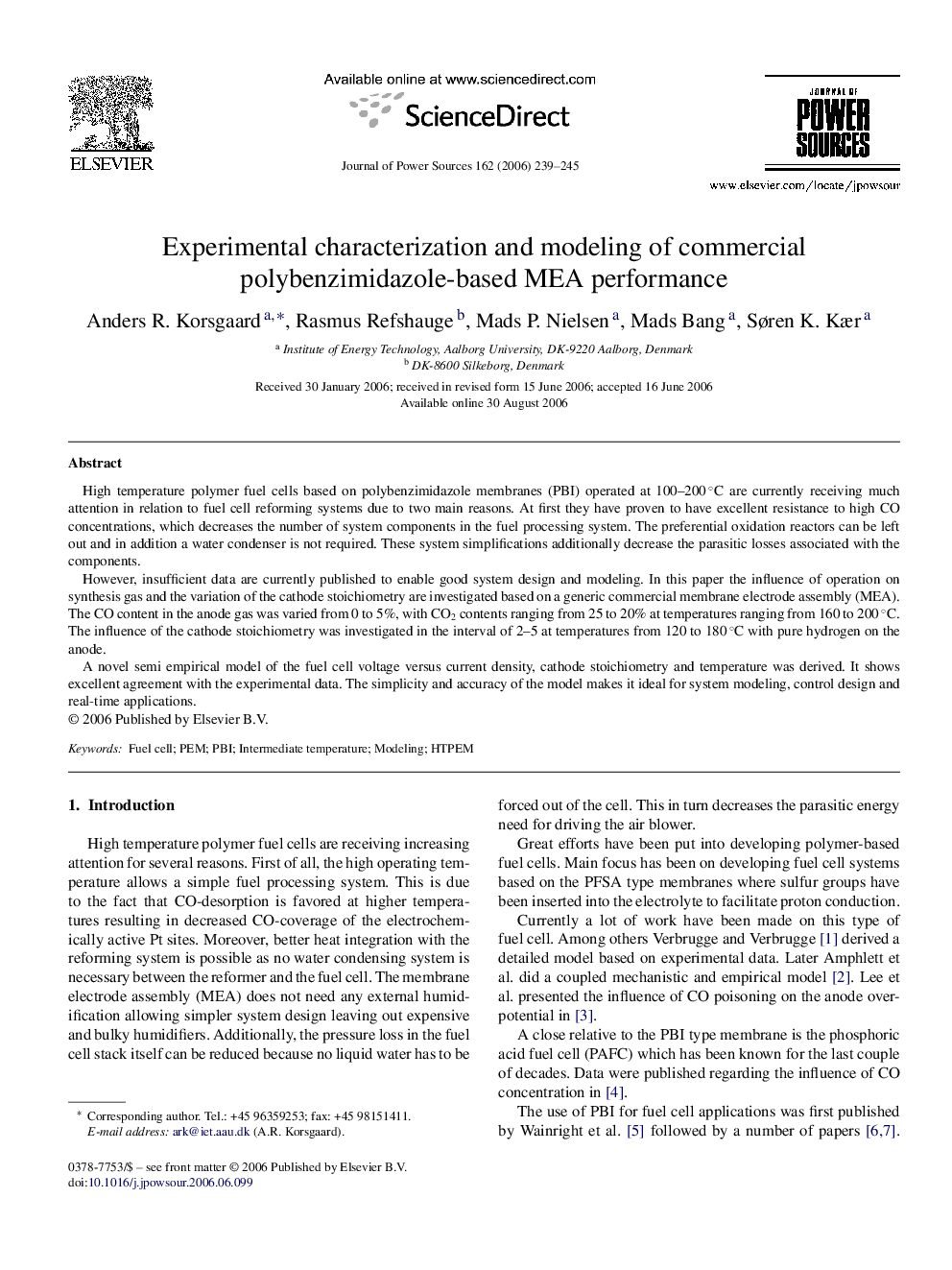| Article ID | Journal | Published Year | Pages | File Type |
|---|---|---|---|---|
| 1291843 | Journal of Power Sources | 2006 | 7 Pages |
High temperature polymer fuel cells based on polybenzimidazole membranes (PBI) operated at 100–200 °C are currently receiving much attention in relation to fuel cell reforming systems due to two main reasons. At first they have proven to have excellent resistance to high CO concentrations, which decreases the number of system components in the fuel processing system. The preferential oxidation reactors can be left out and in addition a water condenser is not required. These system simplifications additionally decrease the parasitic losses associated with the components.However, insufficient data are currently published to enable good system design and modeling. In this paper the influence of operation on synthesis gas and the variation of the cathode stoichiometry are investigated based on a generic commercial membrane electrode assembly (MEA). The CO content in the anode gas was varied from 0 to 5%, with CO2 contents ranging from 25 to 20% at temperatures ranging from 160 to 200 °C. The influence of the cathode stoichiometry was investigated in the interval of 2–5 at temperatures from 120 to 180 °C with pure hydrogen on the anode.A novel semi empirical model of the fuel cell voltage versus current density, cathode stoichiometry and temperature was derived. It shows excellent agreement with the experimental data. The simplicity and accuracy of the model makes it ideal for system modeling, control design and real-time applications.
